

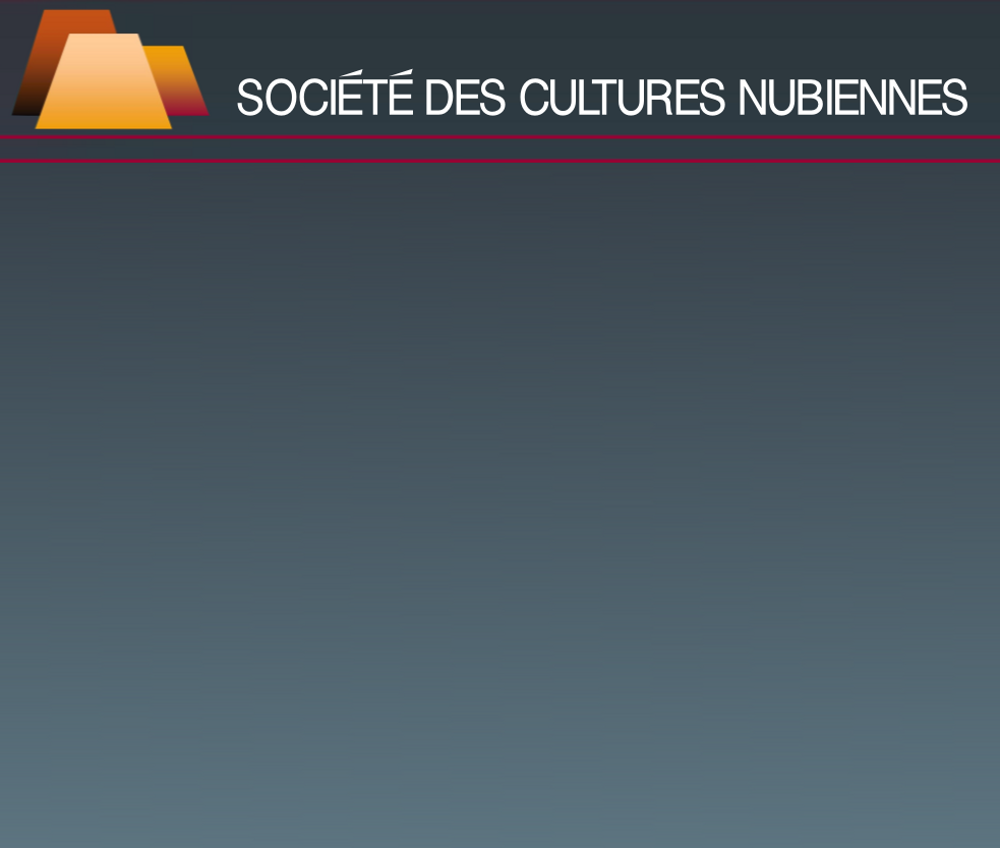
|
THE QUARRIES OF TOMBOS
On the cliffs that line the river, inscriptions confirm the passage of the Egyptian expeditions heading south. A stela of Thutmose I places the limit that no Nubian was allowed to cross at this point. It also mentions a menenu fortress that has never been found, unless it is to be identified with the ruins visible on the island of Dabaki, near Tombos.
The stela of Thutmose I, dated to the 15th day of the second month of akhet, of the second year of his reign, refers to an expedition that he led victoriously to Kurgus above the Fourth Cataract. This place marks the new Egyptian border at the dawn of the XVIII Dynasty: the king has 'penetrated into the valley that the ancestors did not know, that the carriers of two crowns had never seen'. There is talk of scarification, of those that wear skins, of Nehesyu with the burnt face. As Claude Vandersleyen suggests, Thutmose I undoubtedly preferred erecting this stela at Tombos rather than at Kurgus, an area that was too isolated for it to be seen by many.
The site of Dukki Gel undoubtedly holds the answers to many questions. The supply of gold and incense is a constant quest for Egypt and may have been a reason for the destruction of the capital of Kerma.
For more informations, consult the section archaeological site of Dukki Gel |
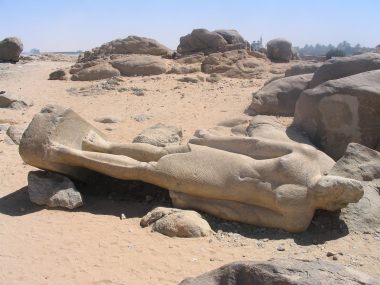 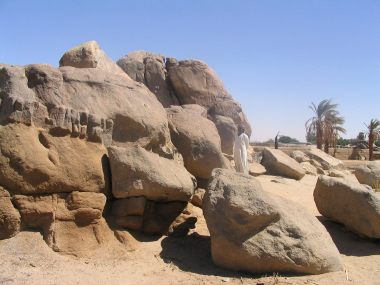 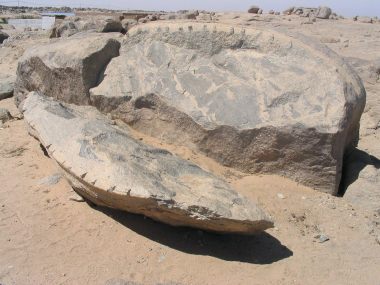 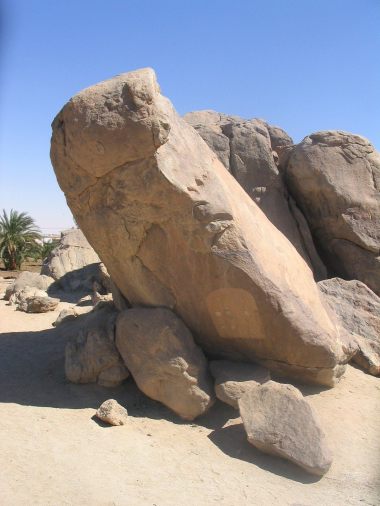 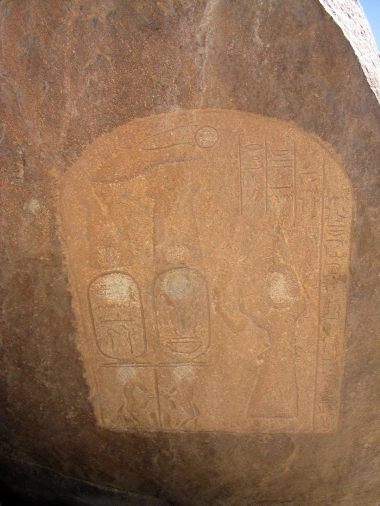 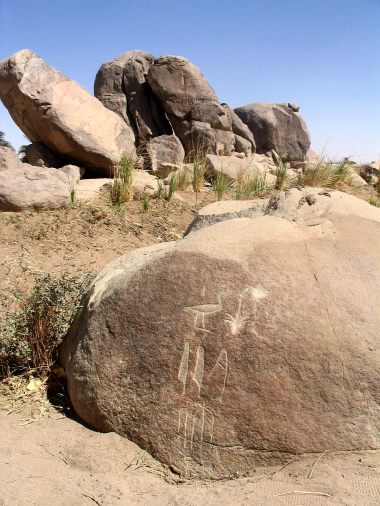 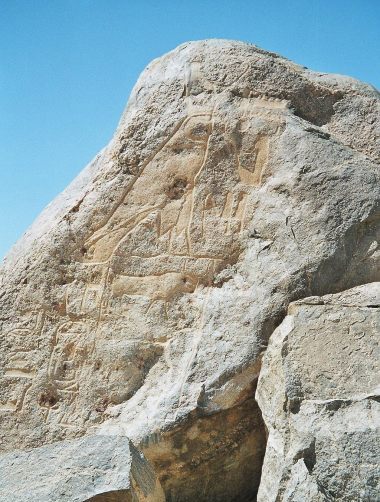 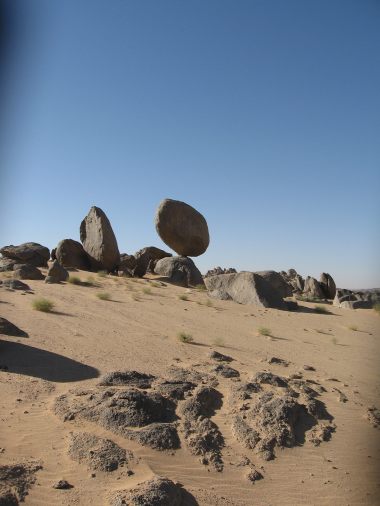 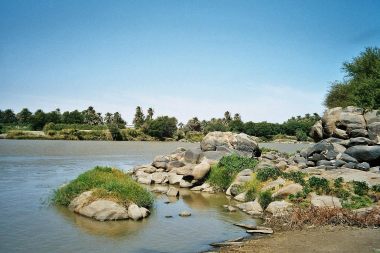  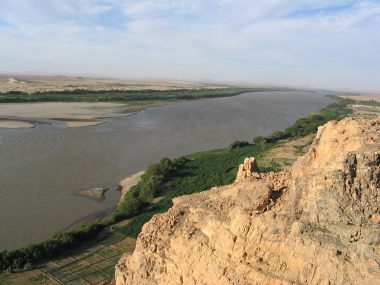 Unfinished statue of a napatean king in the black granite quarries, up-river the Third cataract / Statue inachevée d'un souverain probablement de l'époque napatéenne dans les carrières de granit noir en amont de la Troisième cataracte.
Traces made on a black granite rock following the extraction of a block (up-river the Third cataract) / Traces laissées sur un rocher de granit noir, suite à l'extraction d'un bloc (en amont de la Troisième cataracte)
Clearly visible traces following the extraction of a black granite block in the quarries, up-river the Third cataract / Traces très visibles (encoches) laissées par l'extraction d'un bloc de granit noir dans la carrière, en amont de la Troisième cataracte
Testimony of the egyptian implantation scarved at the base of a rock, up-river the Third cataract. Detail on the following picture / Témoignage de l'implantation égyptienne gravé à la base d'un rocher en amont de la Troisième cataracte. Voir détail sur photo suivante
Stele with cartouches of Amenhotep III, scarved like egyptian way on a black granite block. A man adores two egg-shaped inscriptions surmounted by the Maat feathers, protected by the wingged sun disk. The left-hand inscription presents the Imen hieroglyph (reference to Amon god) and the right-hand inscription, the Neb hieroglyph (the master) / Stèle avec cartouches d'Amenhotep III, gravée à la manière égyptienne sur un bloc de granit noir. Un personnage honore deux cartouches surmontés de plumes de Maât, protégés par le disque solaire ailé. Le cartouche de gauche contient le hiéroglyphe Imen (en référence au dieu Amon) et celui de droite, Neb (le maître). Rough inscriptions concerning the nesout bity (reference to the royal titles of the egyptian king) on a black granite block, up-river the Third cataracte / Inscriptions sommaires du terme nesout bity en référence à la titulature du souverain égyptien (bloc de granit noir en amont de la Troisième cataracte).
Big inscription from the New Empire period with the colossal representation of Horus (falcon god) wearing the upper and the lower crown. Horus is facing the divinity Maat / Grande inscription datée du Nouvel Empire avec la représentation colossale de Horus (dieu faucon) portant la couronne de Haute et de Basse Egypte. Il fait face à la déesse Maât
Third cataract rocks / Enrochements de la Troisième cataracte
The Nile, up-river the Third cataract / Le Nil, en amont de la Troisième cataracte
The Nile downstream the Third cataract / Le Nil en aval de la Troisième cataracte
The desert and the Nile valley from an ottoman fortress, downstream the Third cataract / Le désert et la vallée du Nil depuis une forteresse ottomane, en aval de la Troisième cataracte
|